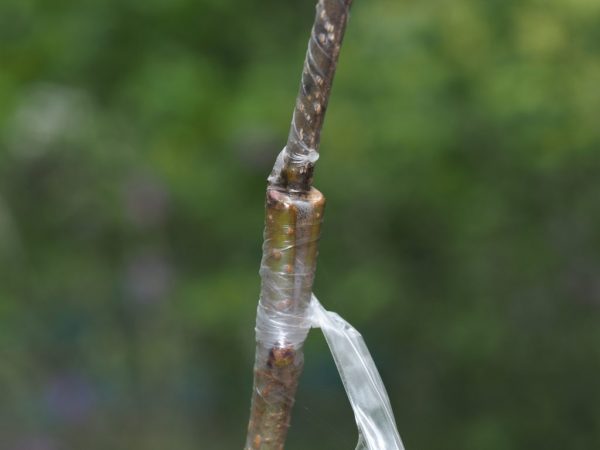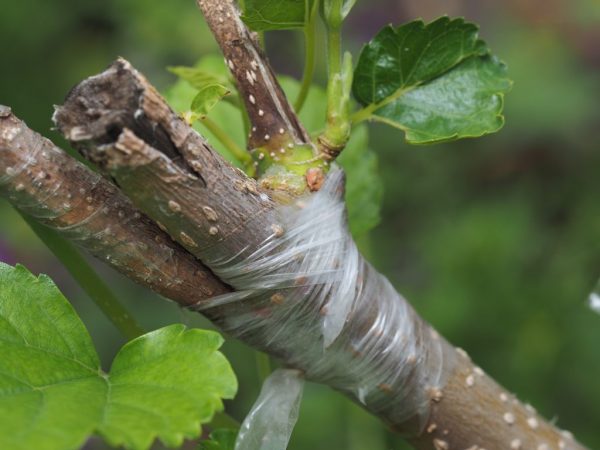Citrus grafting methods
Grafting citrus fruits helps gardeners to harvest homemade lemons, tangerines and oranges from plants that previously developed well, but did not bear fruit, and also provides an opportunity to propagate indoor crops.

Citrus grafting methods
Why Citrus Grafting
Grafting is a combination of several plant parts. So, in the process of the grafting procedure, the stem from one citrus and the stem or foliage of another plant are combined. As a result, these interconnected parts grow together and become a single whole, positively influencing each other.
Often, the plant parts grow so tightly to each other that even a specialist cannot determine the place where the plant was planted.
The plant part that is attached is called the scion, and the plant to which it is attached is called the stock. When grafted with citruses, any variety of 1-2-year-old healthy strong lemon, tangerine or orange acts as a scion, from which a bud or stalk is taken. A wild plant with a well-developed root system is taken in the form of a stock; seedlings grown from seeds are more often used at home.
Positive aspects of vaccination
In the process of grafting citrus fruits, it is permissible to use plants of the same varietal variety or closely related ones, while:
- the grafted plant becomes resistant to the negative effects of the environment, its appearance improves,
- it becomes possible to multiply the plant in a short time and cross different citruses with each other,
- the time of the onset of flowering and fruiting is significantly reduced,
- fruits with improved quality characteristics are obtained and their number increases.
Features of the procedure
Vaccination methods are not difficult to carry out at home, due to their simplicity and availability. The technology of the procedure assumes that:
- manipulations will be carried out in a short period of time in order to avoid the onset of the process of oxidation of plant tissues under the influence of air,
- in the process, disinfected equipment will be used to avoid bacterial and fungal infections in plant tissues,
- the scion and rootstock cuts will be smooth,
- grafting sites on the stock will be pre-washed with soapy water and treated with a fungicidal agent.
The optimal time for grafting at home is May; when the procedure is carried out in an unheated greenhouse, this period is shifted to June. It is recommended to carry out the grafting procedure in a humid room, and when growing citrus fruits in a greenhouse - in rainy weather, since high humidity contributes to the effectiveness of its result, preventing the grafting site from drying out.
For the grafted citrus during subsequent care after the procedure, a mini-greenhouse is created. Shelters with polyethylene or covering with a glass jar are suitable for him.
Vaccination methods

Grafting plants is not very difficult
Citrus fruits at home are inoculated with one of the methods available for independent conduct.
Budding
This is the least traumatic way of grafting citrus fruits and the easiest to do. It consists in the formation of a cut on the rootstock in the form of a "T", inserting a bud-eye, which acts as a scion, into it. Wherein:
- citrus bark is initially wiped with a damp cloth,
- with a blade, an incision is made on the trunk at a distance of about 5-6 cm from the ground surface, 1 cm wide, 2.5-3 cm long,
- the edges of the incision are folded back to form a pocket and the scion is inserted tightly into it,
- the grafting site is wrapped with garden tape.
To improve performance, 2 vaccinations are given at the same time. The fact that the stalk has taken root will be indicated by the absence of blackness on it and a healthy appearance. After 1 month, the apical process up to 10 cm long is removed from the stock.
Various types of citrus are grafted by budding. If the buds take root, the plant will be able to produce fruits of 2 types.
Copulation
When copulating, the citrus scion and rootstock are selected the same in diameter and make even oblique cuts on them. The centers of the slices are cut vertically to a depth of 1 cm. The slices are connected by entering into each other. The vaccination site is tightly wrapped with inoculum material.
When copulating, the accuracy of hitting and the tight connection of the stock and scion cuts are important.
Grafting into cleft
Inoculation into the cleft is carried out in stages:
- wipe the site of the future vaccination with a damp cloth,
- the stock is cut horizontally at a distance of 5-10 cm from the soil surface,
- in the middle of the rootstock remaining after the trimmed trunk, an incision is made to a depth of 2-3 cm,
- 2 cuts 2.5-3.0 cm long are formed on the scion, forming a wedge,
- with a wedge-shaped end, the scion is inserted into the incision of the rootstock trunk,
- the site of inoculation is wrapped with grafting material.
To increase the effectiveness of the grafting procedure, 2 scions are simultaneously inserted into the split rootstock from both ends.
If a stalk grown from a bone with several buds acts as a scion, it is inserted under the bark of the rootstock of the tree, making a split on it to a depth of 3 cm.
Conclusion
Grafting citrus fruits at home can be done in one of three simple ways. This procedure helps to multiply the houseplant, ensure its abundant flowering and increase fruiting.


